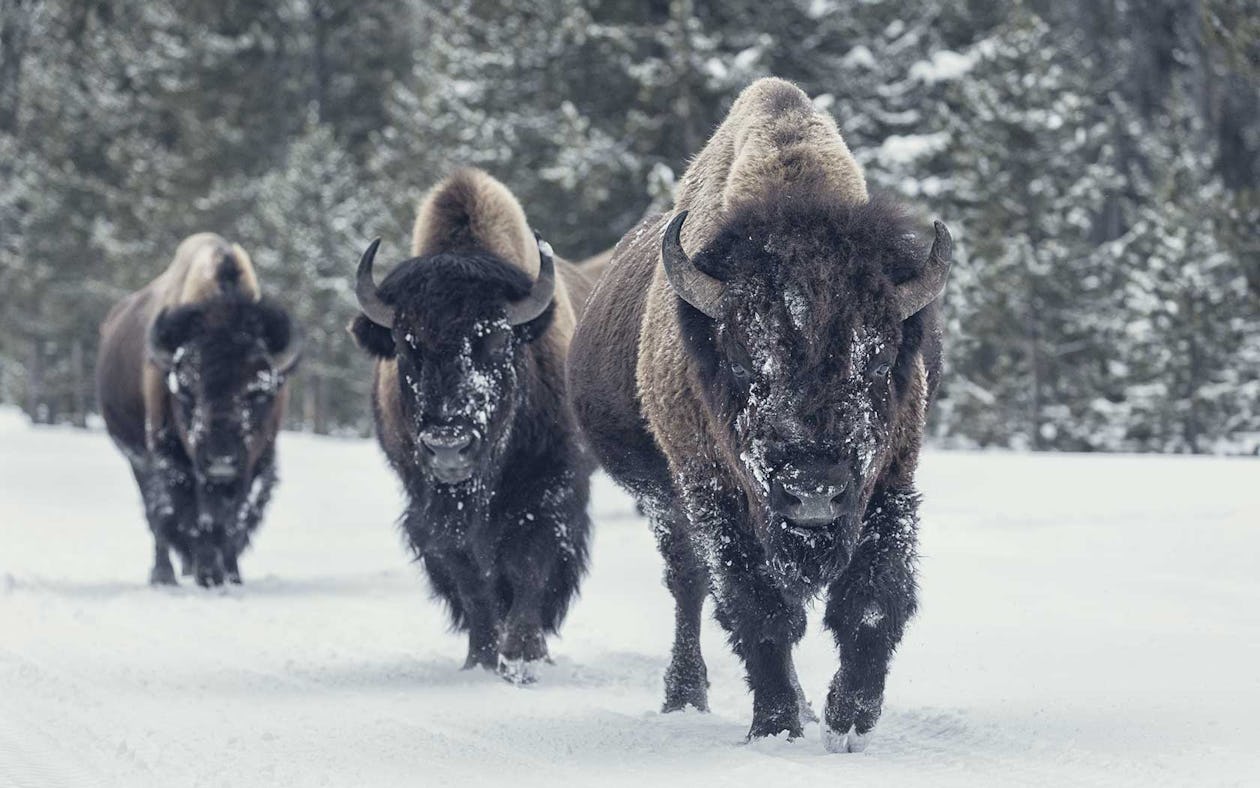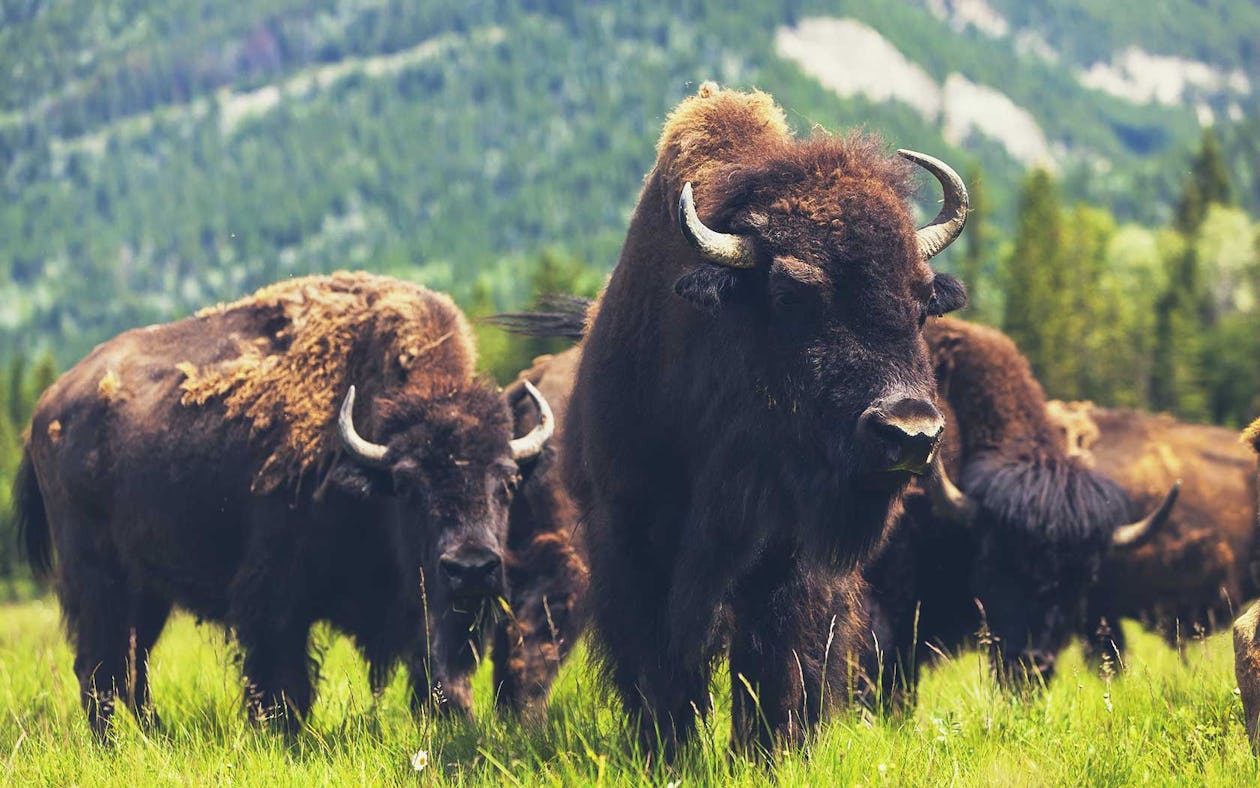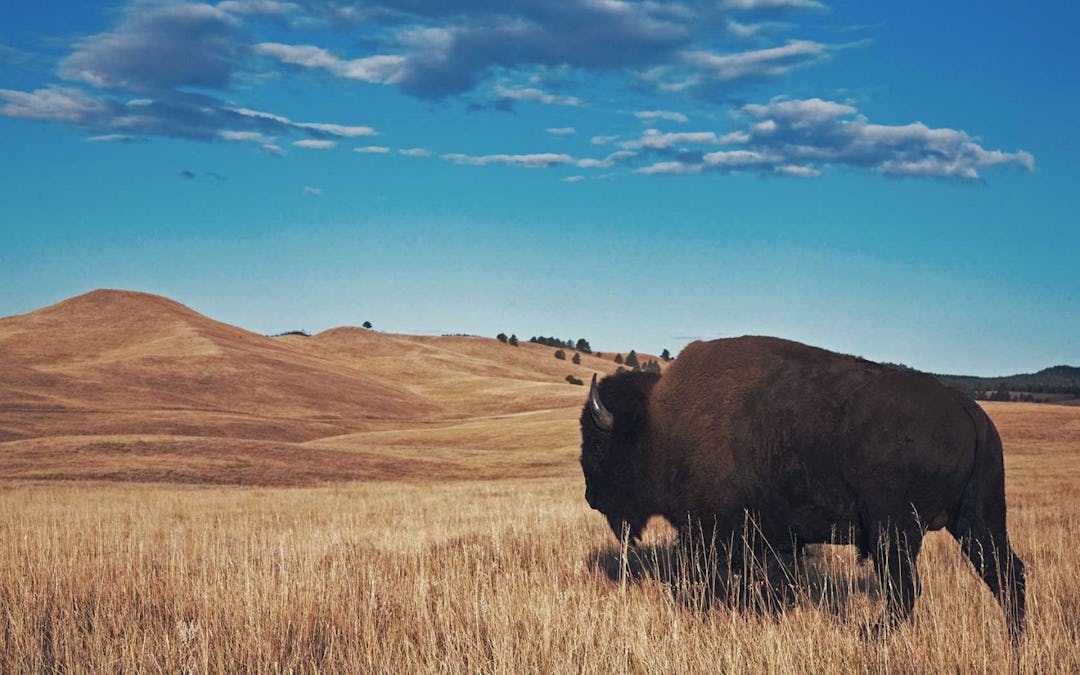After decades of being maligned for its saturated fat, beef has made a comeback with nutritionists, with recent research showing that saturated fat may not increase the risk of heart disease as previously thought.
But beef has another opponent to contend with, and it’s been here for centuries: bison.
Similar to beef both nutritionally and in terms of flavor, buffalo meat is an alternative to the cow (incidentally, “bison” is technically the correct term for the animal, but it’s come to be used interchangeably with “buffalo”).
Both bison and beef can be part of a healthy diet. But if you had to pick one big animal to take a bite out of, which one should you choose?
We compared beef and buffalo in every important category to determine the alpha protein on the range.
Is Bison Better than Beef?
|
BISON |
BEEF |
|
|
Nutrition (4 oz serving)* |
130 calories |
140 calories |
|
Safety |
Never administered antibiotics or hormones |
Often administered antibiotics and hormones (unless USDA Organic) |
|
Environmental Impact |
Low carbon emissions, helps preserve grasslands |
High carbon emissions, depletes grasslands |
|
Treatment of animals |
Allowed to graze freely most of the time |
Usually raised in feedlots (unless marked “free-range” on label) |
|
Taste |
Drier and sweeter than beef |
Drier and leaner than conventional beef if grass-fed |
|
Cost |
More expensive (approx. $9 or more per pound for most cuts) |
Less expensive (approx. $6–7 per pound for most cuts) |
*There are many cuts of both bison and beef available. To equate them as closely as possible, we chose top sirloin—a very lean cut preferred by athletes—for the macronutrients in the table. Also, as bison is mainly raised on pasture, we went with grass-fed beef in the example to match it. In other words, the table compares buffalo to the very best the beef world has to offer. More commonly found conventional beef would have approximately 230 calories, 23g protein, and 15g fat per four-ounce serving.
WINNER: Bison
Why Bison Wins (By A Horn)

Buffalo Meat is Better Quality
Across all cuts, buffalo meat is lower in calories and fat than beef is, and higher in protein. A three to four-ounce serving of bison ribeye has 177 calories, 6 grams fat, and 30 grams protein compared to a typical beef ribeye, which contains 265 calories, 17 grams fat, and 27 grams protein. According to the USDA, bison burgers have 152 calories and 7 grams fat, which is less than even a 90% lean beef burger (184 calories and 10 grams fat) and a 93% lean turkey burger (176 calories and 10 grams fat). Bison offers more omega-3 fats than beef, and a better omega-6 to omega-3 ratio.
Bison doesn’t give up any micronutrition to beef either. It’s higher in B vitamins than beef—critical nutrients that support energy levels, memory, and mood—as well as copper, potassium, and zinc. Reader’s Digest even recommended it as one of the best sources of iron for pregnant women, who tend to be anemic more often than men due to menstruation.
Research supports bison as being heart-healthier too. A study published in Nutrition Research in 2013 compared the effects of consuming bison versus beef. Ten healthy men ate 12 ounces of either beef or bison per day, six days per week, for seven weeks. Then, after a 30-day “washout” to clear their systems, the bison-eaters switched to beef and vice versa for another seven weeks. Researchers concluded that “in terms of vascular health, bison meat appears to provide a healthier alternative to red meat.” In fact, after a single beef meal, harmful oxidized LDL cholesterol levels were elevated. The same changes did not occur after eating buffalo.
If you’re concerned about how your meat was raised (and you should be), bison is the safer choice every time. “All bison spend the majority of their life grazing on pasture,” says Dave Carter, Executive Director of the National Bison Association, a non-profit organization of bison producers. “Some are finished with grain, sometimes in a feedlot,” meaning that they’ll eat grain feed just as most cows do to fatten them up a bit in the last few months before slaughter so they yield more meat. But Carter says that, even if the bison are forced to spend some time fenced in, they get a lot more space than cows do. Bison aren’t as easily controlled as cattle, so it’s much harder for ranchers to keep them in confined quarters like cows are where they can be mistreated and develop diseases.
In fact, it’s more advantageous for buffalo ranchers to treat their livestock well. “If there’s stress on the animal, it won’t produce good meat,” says Carter. “One thing you can be sure of with all bison is that it’s produced without growth hormones or antibiotics. It’s illegal to use them. And most of the bison producers have independent auditors come in to test them.”
OK, But How Do I Cook Bison?
Buffalo meat is drier than beef due to its leanness, so it cooks faster. Carter recommends salting it and brushing it with olive oil to lock in the natural juices. Then be careful not to cook it past medium or it will be too tough. “The biggest mistake is that people dump on so many seasonings they lose the great bison taste,” says Carter, so keep it simple. “If you’re going to pay a premium for bison meat, you should taste it.”
Raising Buffalo is Better for the Environment

According to Carter, 30–40% of ecosystems around the world are grasslands. These draw in carbon, taking it out of the atmosphere and producing oxygen, thereby fighting climate change. “Whether it’s the high plains of North America or the Sahara in Africa, they evolved with grazing animals. These animals get a black eye for being so-called terrible carbon producers, but if you didn’t have them, the environment would collapse.”
Carter says grasslands overgrow, creating 30% more matter than can decompose every year. Without bison to chew some of it up, “grassland will essentially choke itself out.” To be fair, buffalo do fart out carbon just as cows do, but there are far fewer of them—there are a mere 500,000 in the U.S. versus nearly 100 million head of cattle. And bison consume less. “It takes 35 acres to support one cow,” says Carter. Bison by nature must eat different grasses at different times of the year, so the animals are cycled through grazing lands, which promotes sustainability.
Furthermore, Carter says bison are better designed by nature to care for the earth. “Bison hooves are more pointed than cattle hooves, so they tend to stir the soil and push seeds down further. Their bodies make depressions in the ground that capture moisture and return it to the soil.” Buffalo drink less water than cattle and are more resistant to extreme weather, so they can forage for their own food even in a harsh winter and don’t require the same amount of resources that cows do.
Buying Bison Can Support Native Americans
Bison were the staple food of Native American tribes until the latter half of the 19th century, when their population was decimated by disease (brought over from European cattle, says Carter), reckless over-hunting, and anti-Indian U.S. government policy at the time. As a result, the health, culture, and economy of Native Americans has suffered since. Fortunately, a large contingent of the bison industry supports the restoration of bison on Native American land and the resurgence of their community.
The Tanka Fund, created through a partnership between Native American Natural Foods (NANF) and the Indian Land Tenure Foundation, develops the assets needed to supply land to Native Americans to raise their own bison and bring it to market. Their goal is to convert one million acres of land to Native American buffalo producers in order to benefit tribal nations. You can make a donation at the link found here
Resources
1. National Bison Association
2. Bison edges beef in nutrition study
https://www.research.va.gov/currents/summer2013/summer2013-10.cfm
3. 5 Super Foods For Women
https://www.rd.com/health/healthy-eating/5-super-foods-for-women/
4. Feeding Bison
https://extension.usu.edu/behave/files/uploads/Bison-Choice/Feeding%20bison.pdf

)





